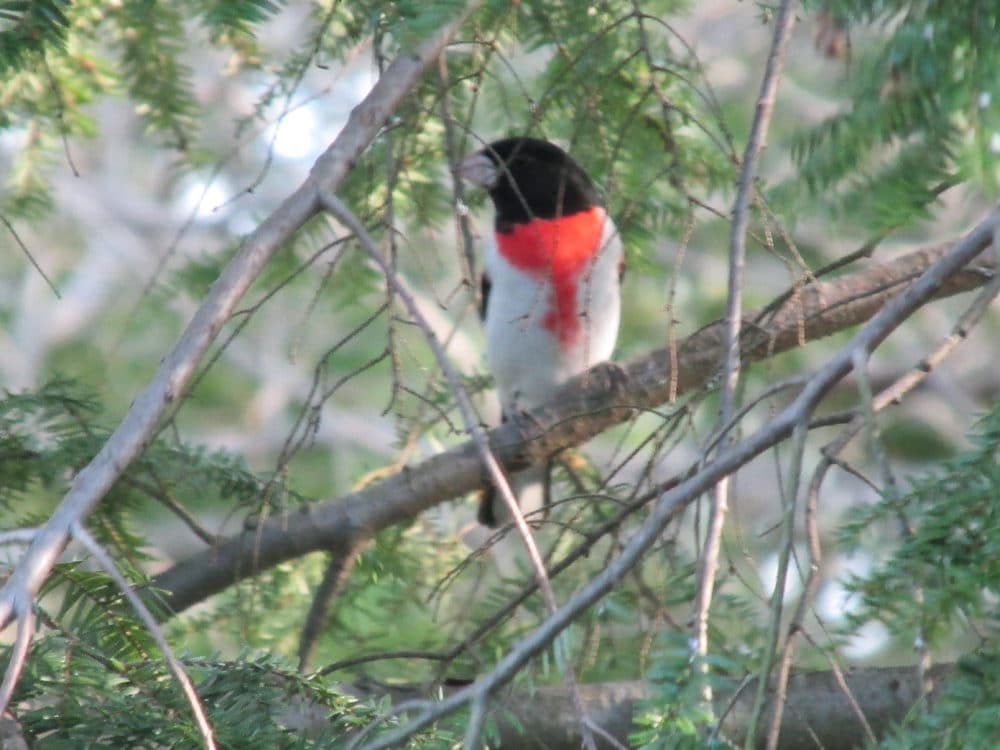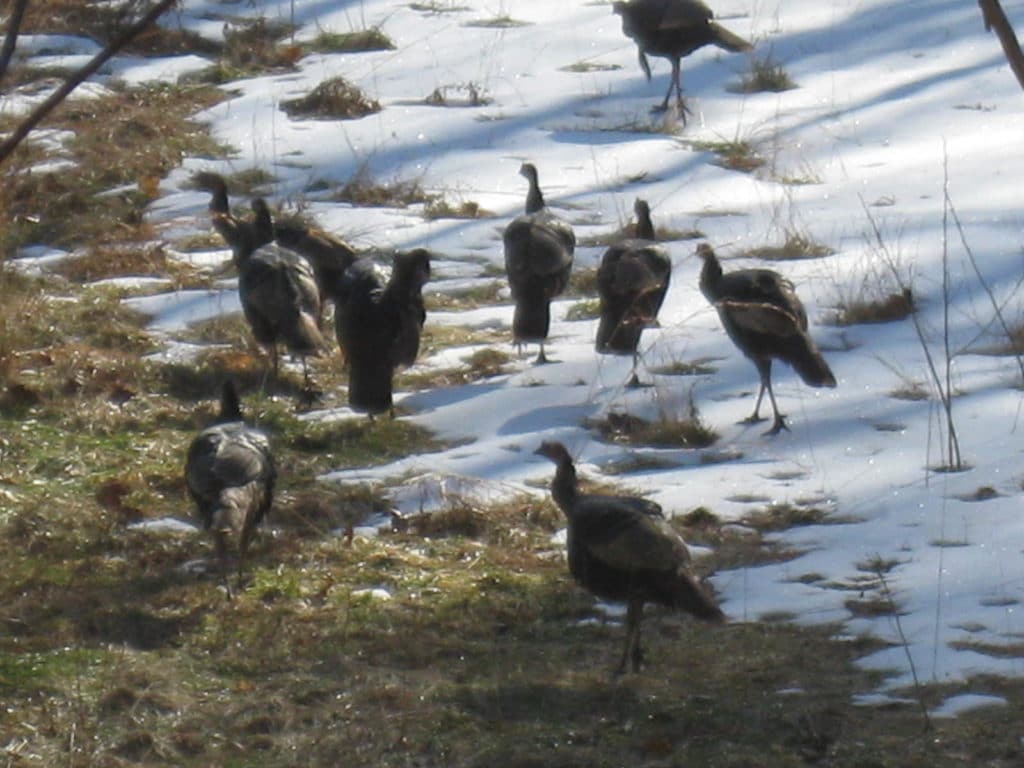Habitat at Home: For the Birds

Snow, ice, food shortages – winter is not for the birds! Learn how to help our feathered friends this season.
Many of us know that putting out a bird feeder is a fun way to support birds, but there is more we can do. Supplying quality food, shelter, and planting the right flowers can help birds survive the winter and even boost native bird populations! Make your backyard the ideal native bird habitat this winter.
Best Food Sources for Native Birds
Many birds rely on insects for food in the spring and summer, and go looking for seeds and berries as the weather gets colder. Providing extra food for native birds can give them a much needed boost in the winter months. When buying bird seed look for ingredients like black-oil sunflower, millet, safflower, or thistle – especially when buying a seed mix to avoid unwanted fillers. Another option is a suet (fat) and seed mix that can be found at most places you find bird seed. This is a great option as it provides birds with much needed fat and protein. Our southeast stewardship manager, Pam Torlina, suggests non-drip suet to avoid melting on milder winter days. Pam also suggests feeding backyard birds from your own garden, by planting natives that will produce seeds in the fall and winter.
“Leave ‘deadheads’ from summer flowers, particularly echinacea & sunflowers, for seed eating birds. The American Goldfinch love the seeds from these flowers! It’s a lot of fun to see them pick the seeds out too!”
If you put out a variety of feed you will invite a variety of birds – in WNC you might even invite turkey! While wild turkeys generally eat the fruits and seeds from large hardwood trees, you might see some in your yard if you put out food for other birds. This is especially the case if you live near a forest and have some oaks nearby – turkeys love acorns and depend on them to get through the winter.

Shelter: From Birdhouse to Brush Piles
Birds are tough. They can survive nighttime winter temperatures just by eating well and fluffing up their feathers. (The bird version of pulling up your bootstraps) While this is true, there are a couple of ways we can support birds with shelter during the winter. Birdhouses are a great start, as birds will use them in the winter to keep warm at night and to raise young in the spring. If you have existing birdhouses make sure you clean out any old nesting materials, and consider adding some dry grass to act as insulation. Leaving a medium to large pile of sticks and branches in one corner of your yard also creates great winter shelter for smaller birds. Another great reason to keep your leaves and brush in your yard and out of the landfill!
Want to Really Pamper Your Backyard Birds?
Here are some more tips for keeping birds going strong all winter:
- Buy some mealworms. Birds love them! Use a slick container, like ceramic, that they can’t climb out of. (Or dried if you are squeamish.)
- Put a heater in your bird bath. Fancy, we know, but you won’t need to worry about it freezing. However, we suggest placing a few rocks in the bath so birds will be discouraged from bathing in very cold temperatures.
- Get a bird feeder that has shelter (like a roof) to protect it from snow and rain, or buy a bird feeder with a higher capacity. More space for bird food = more birds in your backyard!

Habitat at Home is a monthly segment dedicated to providing you with tips to make your yard and home a better habitat for native plants, animals, and insects. Written by Kelly Holland.